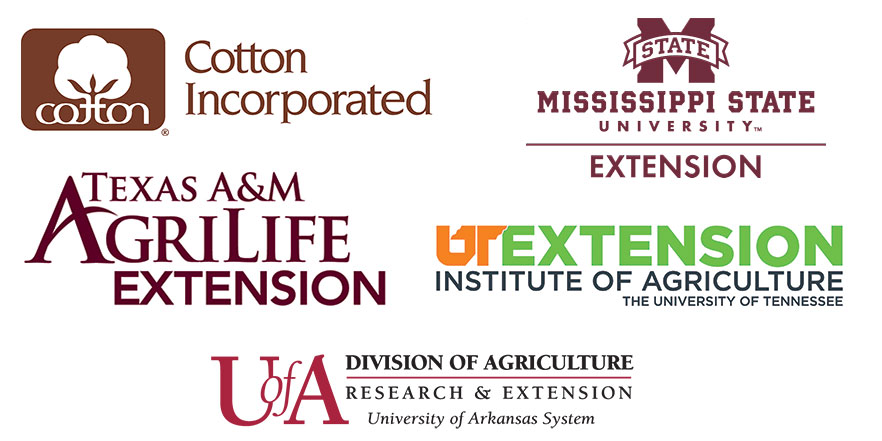The bollworm (Helicoverpa zea), also known as the corn earworm, is considered the most economically damaging caterpillar pest in Texas and Mid-southern U.S. cotton production. The use of Bt expressing cotton varieties has allowed for successful control of lepidopteran pests such as the tobacco budworm (Chloridea virescens) for over two decades and led to the complete eradication of pink bollworm (Pectinophora gossypiella) in the U.S. Despite successfully introducing Bt cotton varieties for these pests, injury from bollworm can still be observed in all Bt cotton varieties, though injury is reduced, especially when multiple Bt toxins are expressed.
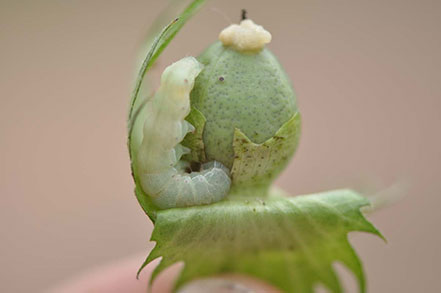
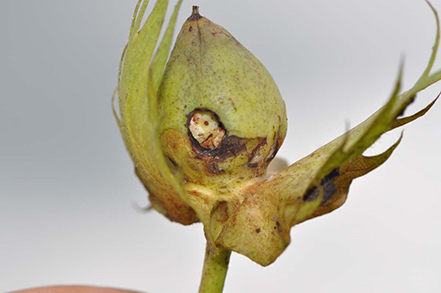
Historically, thresholds in non-Bt and single gene Bt cotton varieties were based on percent eggs or larvae present, or percent boll damage before an insecticide application was warranted. The same economic thresholds continued to be used after the introduction of dual-gene cotton. With the introduction of cotton with three Bt genes, treatment thresholds need to be reevaluated.
These studies analyzed larval counts, plant injury, and the yield of dual and three gene cotton varieties, including when an insecticide application was made for bollworm control. The objective of this research was to generate economic thresholds and determine the relationship between yield and injury from bollworm.
Methods
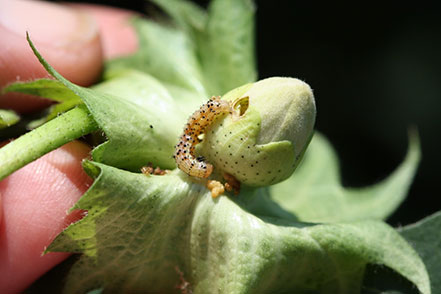
Small-plot replicated experiments, partially sponsored by Cotton Incorporated, were conducted at multiple locations over six growing seasons from 2014-2021 (i.e., 42 site years). The field locations included sites in Arkansas, Louisiana, Mississippi, Tennessee, and Texas. There were four replicates of each treatment. Treatments consisted of six Bt technologies and a non-Bt variety that were either treated or not treated with a foliar application of Prevathon (chlorantraniliprole) at 20 oz/acre (Table 1). Bt technologies and varieties within technologies varied by year. Following the foliar application, plots were scouted at least weekly with 20-25 (of each structure) squares, blooms, and bolls being examined for damage and the number of larvae were present. The term “fruit” within this publications refers to any fruiting structure (squares, blooms, and bolls).
Table 1.
| Abbreviation | Trade Name | Protein Expressed |
|---|---|---|
| NBT | Non-Bt | n/a |
| TL | TwinLink | (Cry1Ab+Cry2Ae) |
| TLP | TwinLink Plus | (Cry1Ab+Cry2Ae+Vip3Aa) or (Cry1Ac+Cry2Ab+Vip3Aa) |
| BG2 | Bollgard 2 | (Cry1Ac+Cry2Ab) |
| BG3 | Bollgard 3 | (Cry1Ac+Cry2Ab+Vip3Aa) |
| WS | WideStrike | (Cry1Ac+Cry1F) |
| WS3 | WideStrike 3 | (Cry1Ac+Cry1F+Vip3Aa) |
Results
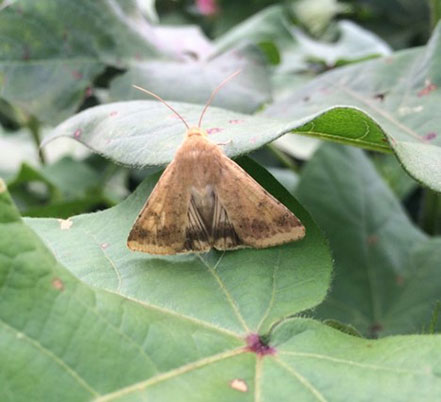
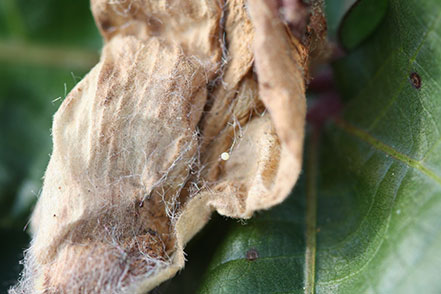
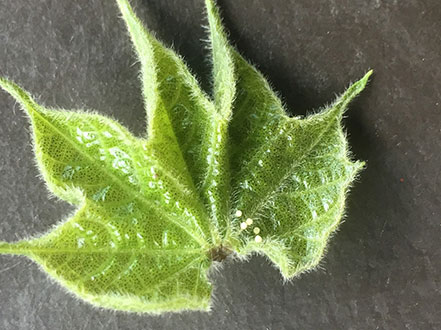
- When utilizing three gene technology, yield protection from chlorantraniliprole (Prevathon) applications was only observed 10% of the time.
- NBT and WS had the greatest yield protection from Prevathon applications but had significantly lower yields regardless of the application.
- By using a threshold of 6% fruit damage, insecticide applications were reduced by 25% for WS and 75% for BG2 relative to using preventive sprays without any yield reductions.
- 6% fruit damage from bollworm injury is an accurate threshold to trigger an insecticide application.
Conclusion
These data suggest that when using a dual gene Bt variety; population density, or fruit damage cannot be independent factors to establish bollworm threshold. The combination of larva density and fruit damage, along with egg thresholds can be used together to better predict when insecticide applications are warranted. Egg thresholds can be utilized for conventional varieties, and areas where widespread resistance to two gene cotton is documented. This threshold is not currently recommended for three gene cotton varieties. Utilizing thresholds based solely on larval density or fruit damage can result in escapes from larva residing in the fruiting structures which are protected from foliar insecticide applications. Utilizing egg thresholds in Bt cotton expressing the Vip3Aa gene is not recommended due to multi-state documentation of resistance. Field studies have validated the effectiveness of the 6% fruiting injury threshold and has been proven to reduce the number of sprays to effectively control bollworm and maintain yield. Increasing the likelihood of prolonged susceptibility to diamide applications.
Table 2. Current Thresholds
| Technology | Threshold |
|---|---|
| Conventional Cotton |
Before bloom: Treat when population reaches or exceeds 8 larvae/100 plants (larvae > 1/4 in or longer) or 6 percent fruit injury of any kind. After bloom: Treat when you find 20% plants with eggs or 6 percent fruit injury of any kind or treat when larvae exceed 4 larvae/100 plants. |
| Two-gene technology |
Before bloom: Treat when population reaches or exceeds 8 larvae/100 plants (larvae >1/4 in or longer) or 6 percent fruit injury of any kind. After bloom: Treat when you find 20% plants with eggs or 6 percent fruit injury of any kind or treat when larvae exceed 4 larvae/100 plants. |
| Three-gene technology |
Before bloom: Treat when population reaches or exceeds 8 larvae/100 plants (larvae > ¼ in or longer) or 6 percent fruit injury of any kind. After bloom: Treat when larvae 1/8-inch long or longer exceed 4 larvae/100 plants or 6 percent fruit injury of any kind. |

Funding and partners
Funding for this research was provided by Cotton Incorporated- Core Program as part of the Midsouth Entomology Working Group. This publication is based on information published in Calvin et al. (2021). Journal of Economic Entomology, vol 114 issue 6, 2493-2504. https://doi.org/10.1093/jee/toab173
